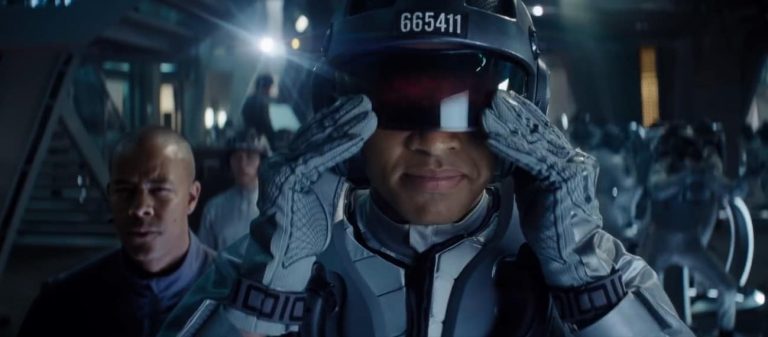The 80’s pop culture reference-riddled Steve Spielberg epic Ready Player One is just a few short days away from theatrical release and crowds will be pouring into seats to watch the depiction of a future where virtual reality usage is as common as scrolling through a Facebook feed or catching a new series on Netflix.
To get the look and feel just right for the film, director Steven Spielberg and set directors sought out today’s best options for VR and AR mounted headset which includes the usage of Oculus Rift, HTC Vive, and Microsoft’s HoloLens.
According to a profile on NextReality, movie director Spielberg was all over the map when it came to picking technologies to use when adapting the cult classic book to film. Originally, Speilberg and the production company struck a deal with HTC to use the Vive in filming but also flirted with using the Oculus Rift as inspiration and for some scenes apparently.
The revelation raised quite a few eyebrows in the competitive VR space, prompting Warner Bros., the film’s studio, to reach out to Slashfilm, the site that published the quote. After the studio’s contact with Slashfilm, the article was updated to note that the Vive was used in the film’s production (without initially clarifying the apparent contradiction with Spielberg’s quote). There was quite a bit of confusion surrounding the story until one of the film’s production team members decided to step forward on Twitter and reveal what was and wasn’t used on the set.
Further muddying the waters, was the revelation that Spielberg and company also used Microsoft’s augmented reality headset, HoloLens as the third option for head-mounted technologies potentially displayed in the film. Despite Ready Player One being a predominately virtual reality-based sci-fi adventure, Spielberg opted to use Microsoft’s HoloLens for its practical applications.
“When shooting mocap [motion capture], Rift. When scouting virtual cameras, Vive. When on the practical set, HoloLens.”
The production team went into further clarification about how HoloLens was used beyond being a simple set piece.
“HoloLens came out during the early days of filming so our use cases were pretty rudimentary,” said Balakrishnan in a followup tweet when asked what part the HoloLens played in the production. “Actors, costume designer, and production designer used HoloLens to see their Avatar in context on-set. Tap-to-spawn Avatar basically. Also used it to export rough OBJ scans of environment.”
While HoloLens competitor Magic Leap has often promoted its relationships and ties to the entertainment industry behind closed door agreements and NDA spectacle, it appears Microsoft’s AR solution is making a real difference in how film production is being conducted. With HoloLens version 2 slated for later this year or early next, fans might begin seeing more of the headsets being worn in the background of B-roll or Behind-the-Scenes footage of their favorite films.


